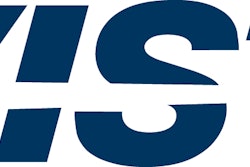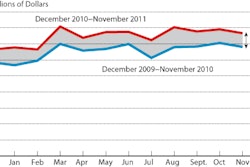An independent study by the Institute of Transportation Studies at the University of California at Berkeley (UC Berkeley) shows a dramatic reduction in air pollution from sources at the Port of Oakland seaport. The study reveals a 50 percent decline in diesel particulate matter emissions from drayage trucks and a 40 percent decline in nitrogen oxide emissions in the port harbor area following implementation of the clean trucks component of the port’s Comprehensive Truck Management Program.
“We are very pleased by the results of the UC Berkeley study,” says Pamela Calloway, port board president. “It independently confirms that partnering with our stakeholders has resulted in cutting diesel emissions in the port area in half.” The port’s partners include the California Air Resources Board, the Bay Area Air Quality Management District, the Environmental Protection Agency, trucking companies, owner-operators and other community stakeholders. “Together we have significantly improved air quality in our maritime area, and we are continuing our commitment to reduce pollution because it is vital to the health of our workers and neighbors,” says Calloway.
Beginning in January 2010, drayage trucks with engine year models between 1994 and 2003 were required to be retrofitted with a diesel particulate filter to enter Port of Oakland maritime facilities. The DPM filter is verified by CARB to reduce a truck’s diesel emissions by at least 85 percent. CARB, BAAQMD, EPA and the Port of Oakland funded grants for truck retrofits and replacements.
In March 2008, the Oakland Board of Port Commissioners unanimously adopted a major maritime air quality policy statement along with actions to reduce diesel emissions. The UC Berkeley study measured ambient conditions directly above 7th Street in the port area where there is concentrated truck traffic. Air samples were taken in November 2009 and then again in June 2010 after the port’s CTMP clean trucks component was implemented. The data were used for an independent, academic and peer-reviewed study that looked for changes in diesel particulate matter and nitrogen oxides emissions from drayage trucks in the seaport area.
“This study indicates that we are on the right path,” says Omar Benjamin, port executive director. “We have been and continue to work with our partners to achieve our goal that, by the year 2020, the Port of Oakland will have cut the health risk from diesel particulate matter at our seaport by 85 percent.”













